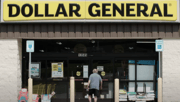How rising prices are quietly shaping your everyday spending habits
- Replies 0
Ever stood in the grocery aisle, stared at a carton of eggs, and thought... wait—weren’t these way cheaper just a few years ago? You’re not imagining it.
Inflation may have slipped off the front pages, but it’s still living rent-free in our budgets, bank accounts, and everyday choices.
The big question now isn’t just about rising prices—it’s about how we’re adapting to them, often without even realizing it.
Let’s pull back the curtain on how inflation is quietly rewriting our shopping habits—and why it matters more than ever.
According to a recent Gallup poll, just 29% of Americans now rank inflation as their top financial worry. That’s down from 41% a year ago—and the lowest it’s been since 2021.
At first glance, it might look like we’re moving on. Maybe the worst is behind us?
Another tracker from Ipsos found that fewer people feel their household costs are rising.
Back in February, 68% said they were spending more than the year before.
By May, that number had dipped to 58%. Sounds encouraging—until you look closer.

A CBS News poll tells a different story: 76% of Americans say their income still isn’t keeping pace with rising costs.
Meanwhile, a University of Michigan survey found that consumers now expect prices to jump 6.6% over the next year—double last year’s forecast.
In short, the fear hasn’t disappeared. It’s just changed shape.
So what’s really happening? Are we adjusting, or just exhausted? Maybe both.
Despite the ongoing financial pressure, Americans haven’t stopped spending. Consumer data shows steady spending growth since 2021—even as prices surged.
Also read: Inflation hits 2.3% in April, CPI report reveals—What it means for you
Yes, April saw a mild dip, but overall, we’re still swiping cards and checking out online.
Why? Part of it is mental fatigue. After four years of inflation above the Fed’s 2% target, we’ve simply gotten used to it.
With inflation hovering at a calmer 2.3% in April 2025, the panic has faded. But the frustration? Still very real.
Other financial fears are taking center stage. Think new tariffs, stock market turbulence, and looming questions around Social Security and Medicaid.
When President Trump announced sweeping tariffs in April, it didn’t just shake up global trade—it rattled consumers too.
Those tariffs are already sparking inflation fears again. The University of Michigan found expectations for price increases soared after the announcement.
The inflation story might have changed—but it’s not over.
Here’s where it gets more complicated. Inflation isn’t just an economic issue anymore—it’s political. Democrats currently expect prices to rise by 8% next year.
Republicans? Just 0.4%. That’s not just a disagreement—it’s a chasm.
Economists say this divide reflects how each party views the success (or failure) of today’s policies.
Also read: Inflation alert: Forget grocery prices, THIS essential is the real culprit
But regardless of politics, everyone feels the same frustration when the checkout total seems too high.
For most Americans, inflation wasn’t even a topic of conversation for decades. We hadn’t seen anything close to 8% inflation since 1981—until 2022 hit like a freight train.
We’d gotten used to stable prices and steady raises. Then came the shock.
While prices aren’t rising as fast now, they’re still high. And that shift is harder to adjust to than you might think.
Because even if inflation slows, it doesn’t mean prices drop—they just don’t rise as quickly. That’s a crucial difference.
Experts say it’s not enough for inflation to cool off. We’d need months—maybe years—of low inflation and solid wage growth to truly “forget” the price hikes of the early 2020s.
Until then, comparisons to 2019 will keep showing up in every budget discussion.
And let’s be honest: who hasn’t done the mental math on what eggs used to cost? Some memories linger longer than others.
Read next: Is $400 in inflation relief coming your way? Here’s what you should know

How is inflation showing up in your daily life? Have you changed the way you grocery shop, dine out, or plan vacations? Are you adapting with new habits—or just trying to hold steady until things get better? We want to hear your story. Because if inflation has taught us anything, it’s that every dollar—and every decision—counts. Let’s trade tips, strategies, and real talk in the comments below.
Inflation may have slipped off the front pages, but it’s still living rent-free in our budgets, bank accounts, and everyday choices.
The big question now isn’t just about rising prices—it’s about how we’re adapting to them, often without even realizing it.
Let’s pull back the curtain on how inflation is quietly rewriting our shopping habits—and why it matters more than ever.
According to a recent Gallup poll, just 29% of Americans now rank inflation as their top financial worry. That’s down from 41% a year ago—and the lowest it’s been since 2021.
At first glance, it might look like we’re moving on. Maybe the worst is behind us?
Another tracker from Ipsos found that fewer people feel their household costs are rising.
Back in February, 68% said they were spending more than the year before.
By May, that number had dipped to 58%. Sounds encouraging—until you look closer.

How rising prices are quietly shaping your everyday spending habits. Image source: Mariia Shalabaieva / Unsplash
A CBS News poll tells a different story: 76% of Americans say their income still isn’t keeping pace with rising costs.
Meanwhile, a University of Michigan survey found that consumers now expect prices to jump 6.6% over the next year—double last year’s forecast.
In short, the fear hasn’t disappeared. It’s just changed shape.
So what’s really happening? Are we adjusting, or just exhausted? Maybe both.
Despite the ongoing financial pressure, Americans haven’t stopped spending. Consumer data shows steady spending growth since 2021—even as prices surged.
Also read: Inflation hits 2.3% in April, CPI report reveals—What it means for you
Yes, April saw a mild dip, but overall, we’re still swiping cards and checking out online.
Why? Part of it is mental fatigue. After four years of inflation above the Fed’s 2% target, we’ve simply gotten used to it.
With inflation hovering at a calmer 2.3% in April 2025, the panic has faded. But the frustration? Still very real.
Other financial fears are taking center stage. Think new tariffs, stock market turbulence, and looming questions around Social Security and Medicaid.
When President Trump announced sweeping tariffs in April, it didn’t just shake up global trade—it rattled consumers too.
Those tariffs are already sparking inflation fears again. The University of Michigan found expectations for price increases soared after the announcement.
The inflation story might have changed—but it’s not over.
Here’s where it gets more complicated. Inflation isn’t just an economic issue anymore—it’s political. Democrats currently expect prices to rise by 8% next year.
Republicans? Just 0.4%. That’s not just a disagreement—it’s a chasm.
Economists say this divide reflects how each party views the success (or failure) of today’s policies.
Also read: Inflation alert: Forget grocery prices, THIS essential is the real culprit
But regardless of politics, everyone feels the same frustration when the checkout total seems too high.
For most Americans, inflation wasn’t even a topic of conversation for decades. We hadn’t seen anything close to 8% inflation since 1981—until 2022 hit like a freight train.
We’d gotten used to stable prices and steady raises. Then came the shock.
While prices aren’t rising as fast now, they’re still high. And that shift is harder to adjust to than you might think.
Because even if inflation slows, it doesn’t mean prices drop—they just don’t rise as quickly. That’s a crucial difference.
Experts say it’s not enough for inflation to cool off. We’d need months—maybe years—of low inflation and solid wage growth to truly “forget” the price hikes of the early 2020s.
Until then, comparisons to 2019 will keep showing up in every budget discussion.
And let’s be honest: who hasn’t done the mental math on what eggs used to cost? Some memories linger longer than others.
Read next: Is $400 in inflation relief coming your way? Here’s what you should know
Key Takeaways
- Fewer Americans now name inflation as their top concern—just 29%, down from 41% last year—suggesting many are adjusting to a new financial reality.
- Despite that shift, most people still feel their income isn’t keeping up, and inflation expectations are actually rising in some polls.
- Political identity heavily shapes inflation expectations, with Democrats predicting far higher future prices than Republicans.
- Experts say we’ll need low inflation and real wage growth to truly “move on”—but for now, the impact of past price hikes still lingers.
Last edited:






